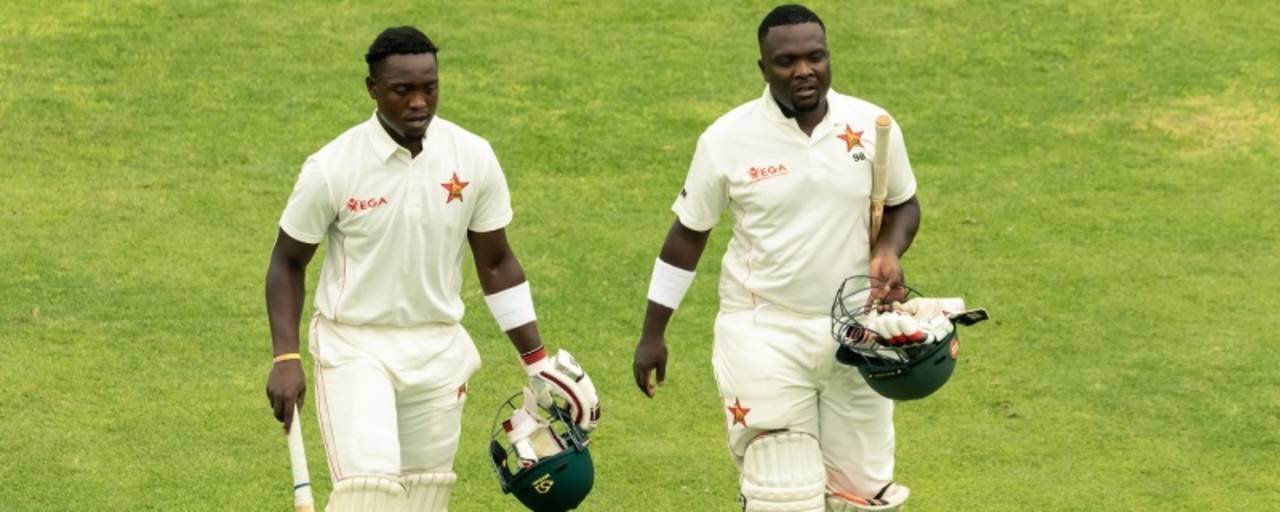Does Jason Gillespie have the lowest average of any Test double-centurion?
Also: Has anyone reached 200 dismissals in Tests faster than Quinton de Kock?

Kevin Kasuza, left, made his Test debut opening Zimbabwe's first innings, only to have to sit out the second with a delayed concussion, allowing sub Brian Mudzinganyana to make his debut • AFP
Zimbabwe's Prince Masvaure - who was playing only his third Test himself - opened with the debutant Kevin Kasuza in the first innings against Sri Lanka in Harare, then, after Kasuza suffered a delayed concussion, with Brian Mudzinganyana in the second innings. Mudzinganyama was the first to make his Test debut as a substitute: it was only his fourth first-class match of a career that started a month earlier with an exciting Logan Cup match for Rangers in Harare.
South Africa's Quinton de Kock made his 200th dismissal in Tests when he caught Ollie Pope in the fourth Test in Johannesburg over the weekend. It was the 45th Test - and 84th innings - in which he had kept wicket (he has played two additional matches as a specialist batsman, but took no catches). None of the 17 other keepers who amassed 200 Test dismissals got there quicker: de Kock broke the record set by Adam Gilchrist, who needed 47 Tests and 92 innings. England's Godfrey Evans took longest to get there - 80 Tests and 153 innings.
Jason Gillespie's famous innings of 201 not out as a nightwatchman against Bangladesh in Chittagong (now Chattogram) in 2005-06, in what turned out to be his final Test, raised his batting average from 15.64 to 18.73. Despite that hike it's still the lowest for anyone with a Test double-century: next come Wasim Akram of Pakistan (22.64) and the long-ago Australian Syd Gregory (24.53).

The first successful chase of over 300 in a one-day international came during the 1992 World Cup, in New Plymouth, when Sri Lanka overhauled Zimbabwe's 312 for 4 with four balls to spare. Andy Flower was making his ODI debut in that game, and scored 115 not out for Zimbabwe, who were not a Test-playing nation at the time (their inaugural Test was around eight months later, against India in Harare in October 1992).
Colin Munro, Kane Williamson and Ross Taylor all reached 50 in the first T20I against India in Auckland last week. This was the eighth instance of three scores of 50-plus in the same innings, but only the second in a match lost by the team concerned. The other one was in the World T20 in Mumbai in March 2016, when three South Africans passed 50, but England got home with two balls to spare.
Steven Lynch is the editor of the updated edition of Wisden on the Ashes